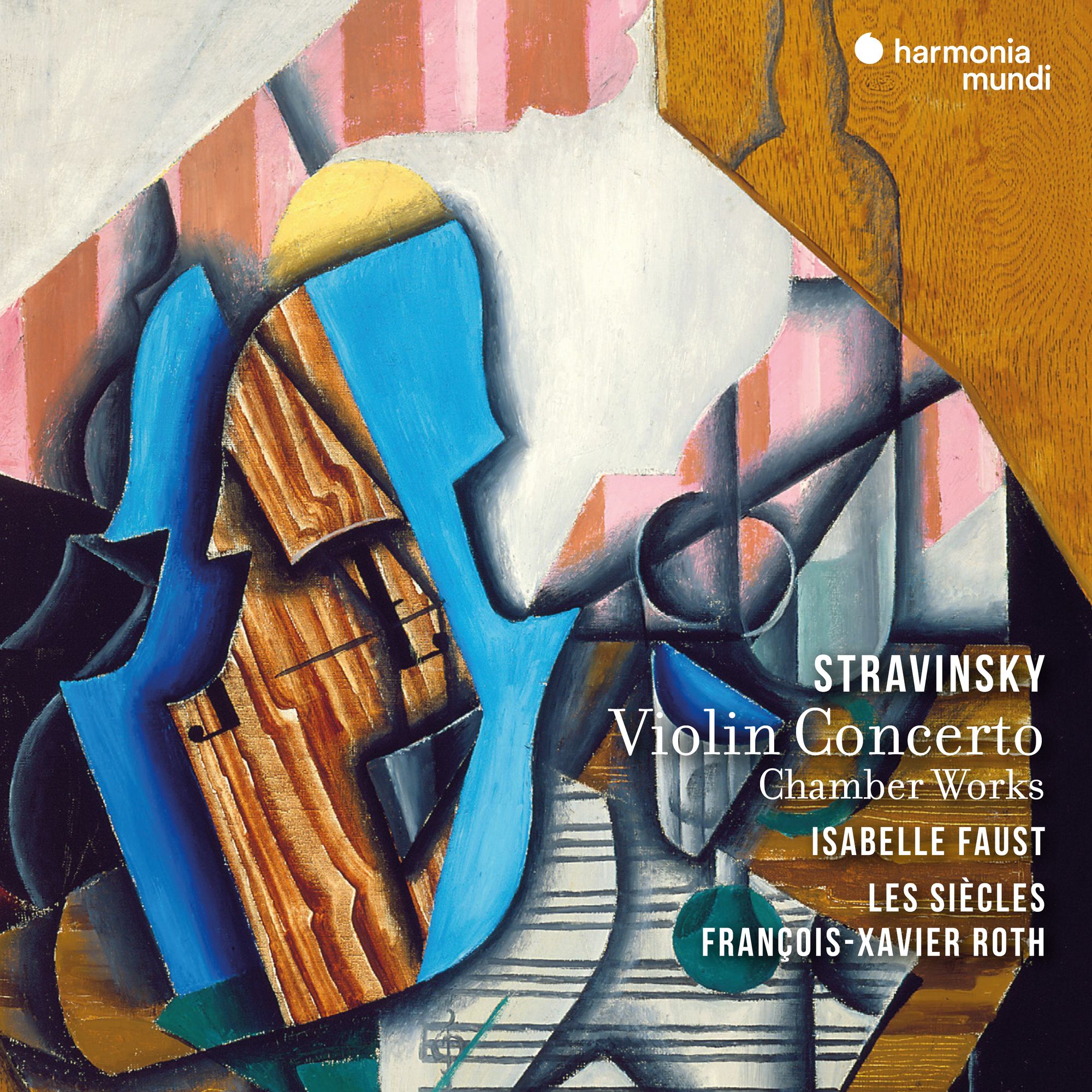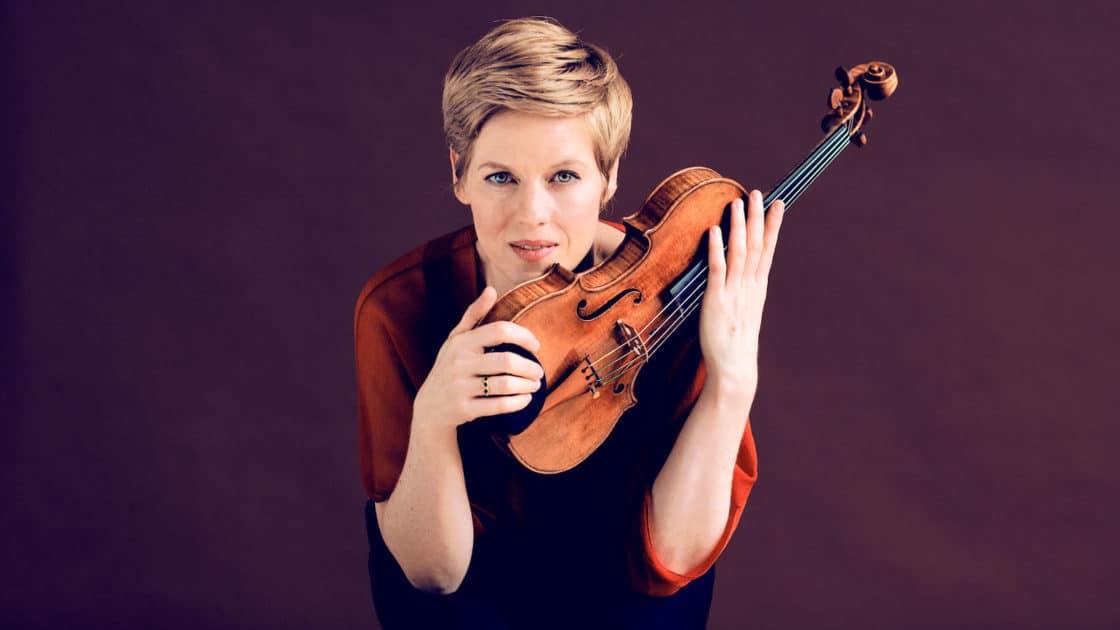Extraordinary Stravinsky from Isabelle Faust
Anyone who wishes to extend their experience of Stravinsky’s music should acquire this disc

Stravinsky’s Violin Concerto has never quite achieved the popularity it deserves. It is a masterpiece, pure and simple; yet I can list the live performances I have heard on the fingers of one hand. Its discography is somewhat mroe extensive, however ...
Since I wrote a BOG (yes, BOG: “Back of Gramophone”) conspectus on the Stravinsky Violin Concerto many years ago, the number of recordings has increased enromously (and there were plenty then!). But with his period Les Sièces band, François-Xavier Roth together with Isabelle Faust ensure every texture is clean in the Toccata first movement in a way few if any others achieve:
Written for the violinist Samuel Dushkin (1891-1976), a pupil of Leopold Auer, Stravinsky’s piece is absolutely unique in the violin concerto canon. Something of a concertante work, it nevertheless begins with a spread solo violin chord that caused some problems: initially, Dushkin told Stravinsky it was unplayable. When he found it could be done, it must have come as a huge relief for the composer: the chord does, after all, begin each of the four movements!
The performance here by Les Siècele uses instruments from around 1900, and uses gut strings.

The feel is Neo-Baroque (ie, taking characteristics from the earlier idiom and placing them in the context of a contemporary mode of expression): the movement titles are Toccata, Arias I & II, and Capriccio. Listen to the many exchanges between soloist and orchestra in the excerpt above; and to Stravinsky’s foregrounding of woodwind and brass. Stravinsky casts a shadow over his Aria I; the music is almost theatrical in its demeanour, and Faust’s whispered contributions are spellbinding:
The booklet notes are right to reference Bach’s Violin Concertos in reference to Aria II, a restrained song-lament for the soloist which finds Faust at her most lyrical, the line a mere thread of silk:
Those exchanges from the first movement return in the “Capriccio” finale - in this performance, in an almost manic fashion. Faust and Roth find the contrasts in this movement perfectly, too:
As an addendum, here is Dushkin’s own October 1935 recording, conducted by the composer (here transferred from a Japanese Polydor pressing!).
The Violin Concerto is prefaced by the “Variation of Apollo” from Stravinsky’s 1927/8 ballet Apollon Musagète, a wonderful piece scored for string orchestrra and part of the composer’s so-called “white” music (the original choreopgrapher Balanchine said that when he heard the score all he could see was white). The violin opening of the “Variaton of Apollo (Apollo and the Three Muses)” nicely pre-echoes the gesture that opens the Violin Concerto.
Dedicated to the conductor Ernest Ansermet, the ballet Apollon Musagète is definitely worth hearing in toto. I remember learning it many years ago now from Ansermet's own 1955 recording with the Orchestre de la Suisse Romande on a Decca Eclipse LP (ECS 822, if anyone”s interested), where it was coupled with Stravinsky’s extraordinary Les Noces (The Wedding):
The Three Pieces for String Quartet are little, but extraordinary. Dating from 1914, and thus shortly after the massive Le sacre du printemps, they are carefully carved miniatures, each concentrating on little cells. Stravinsky only gives metronome marks, not tempo indications, pointing towards a enw obkectivity. The first is based on a Russian folk melody, the second is, according to the dedicatee Ansermet, “a wretched juggler who has to hide his sorrow while performing his feats in front of a crowd” while the third is remarkable in textural terms: all instriments together rhythmically and performed sul tasto (on the fingerboard, an otherworldly sound).
Composed for the Flonzaley String Quartet (which ensemble commissioned the Three Pieces), the Concertino (1920) is an under-played and remarkable piece, gritty, teeming with life. It also features a solo violin, in keeping with the concertino title. Here is an alternative performance, included as you can follow along with the on-screen original manuscript score. This is the Claremont Quartet, recorded in 1968:
The helter-skelter nature of some of the writing comes across viscerally in the recording by members of Les Siècles. The wind instruments excel in the Pastorale (an adaptation of a work dating from 1907 for violin, obor, cor anglais, clarinet and bassoon). Here's a video of Faust and Les Siècles’ performance:
Finally, the Double Canon (In Memoriam) from the other end of Stravinsky’s life (1959). here again is a performance with score:
The Les Siècles performance is perfect in its restraint, the very epitome of a lachrymose “In Memoriam”. An extraordinary way to close a magificent disc.
Anyone who wishes to extend their experience of Stravinsky’s music beyond the three Russian ballets (Firebird and here, Petrushka, Rite of Spring plus all three from the present performers, Roth and Les Siècles) should acquire this disc ...
... and don’t forget our previous Stravinsky posts: Andrew Davis on Chandos in the Symphony in C and the Symphony in Three Movements amongst others; and another Stravinsky Violin Concerto with Vilde Frang.
